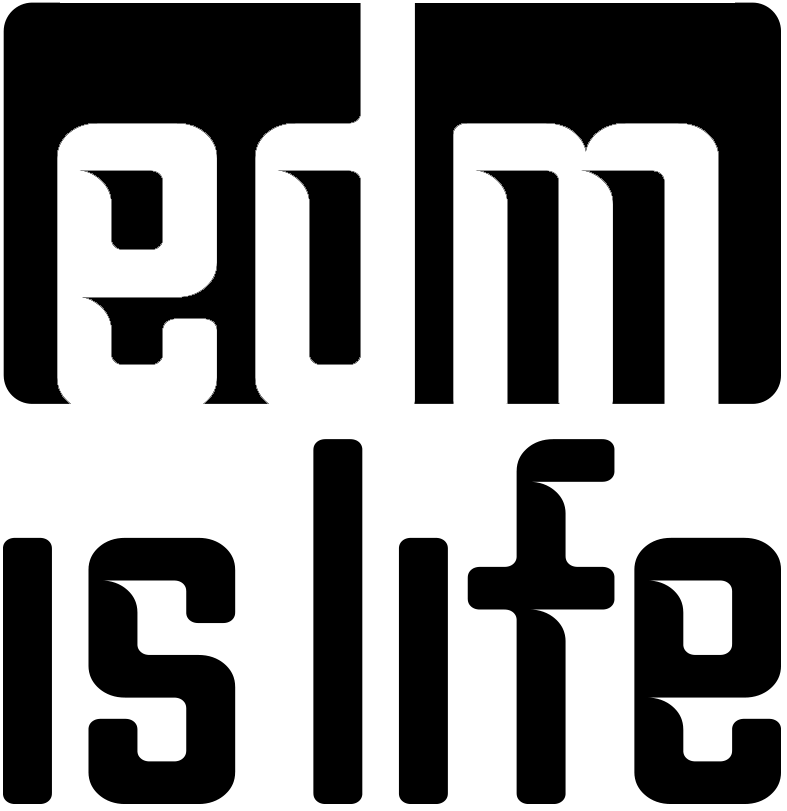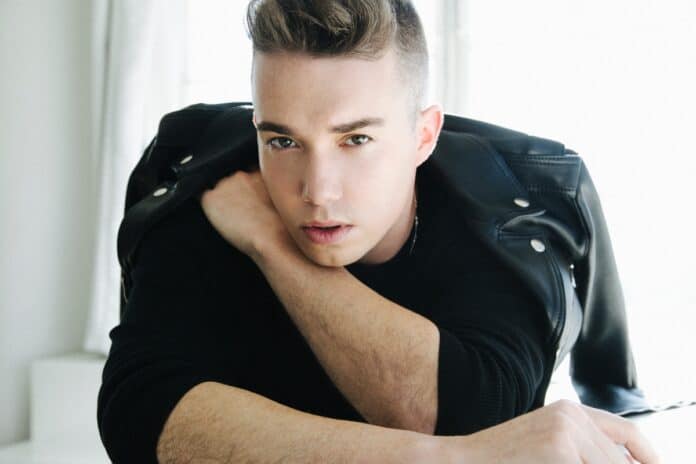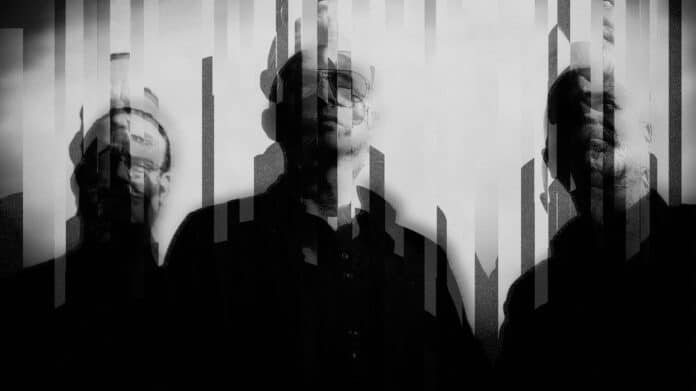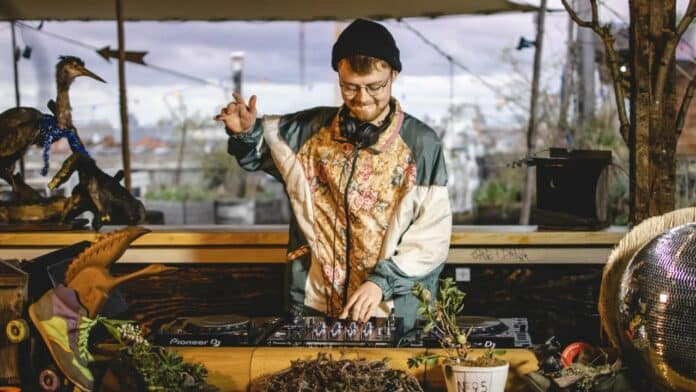
The Coral on their epic new album: “‘Coral Island’ is the world on our own terms”
The Coral have always had a whiff of salty sea air about them, right back to the psychedelic sea shanties they made their name with on their self-titled 2002 debut, but now the Wirral legends have turned to beach towns for inspiration. From the neon-shimmering candy-floss-coated Narnia that seaside towns feel like in their prime, to the spooky melancholy unique to out-of-season resorts, The Coral explore both side of the coin with the glorious ‘Coral Island’, a hymn to the pomp and decay of an imagined fairground town, and the characters within it.
It’s being touted as a career-best album (we lavished praise upon it in our four-star review), as evocative as feeling the sand between your toes. We caught up with frontman James Skelly and keyboardist Nick Power to discover how they created their own island as a playpen for their creativity.
It’s fair to say that ‘Coral Island’ is an ambitious record…
James Skelly: “We knew we had to something you can’t ignore. You can’t expect people to care about your 10th album unless you’re giving them something to work with. We saw the arcade Coral Island in Blackpool and it felt like a banner to bring our separate skills – like Nick’s books, Ian’s drawings et cetera – together. Watching it grow was exciting. When Edwin Burdis, who did the artwork, build an actual Tracy Island-style Coral Island, it inspired us more.”
Was it always intended to be a double album?
James: “No, it was going to be two albums – ‘Welcome to Coral Island’ and ‘The Ghost of Coral Island’. It’s important it’s in two parts even though it’s a double album. The first side is the soundtrack to the arcades and fairs in summer, and the second is when it’s closed down in the winter and the characters who are left on the island.”
Nick Power: “When you’re a kid, seaside towns feel magical then you see them later and think: these towns are fucked-up! The first half of the album sees it through the eyes of innocence and the second is through the eyes of experience. Finishing it before lockdown was a blessing because we had time to make it as imperfect as possible, so it sounds like a broken tannoy at the end of a pier.”
Nick, tell us about the accompanying book ‘Over Coral Island’, which you’ve written and Ian Skelly has illustrated…
Nick: “They’re short stories about the people living on the island and it expands on the characters on the album. There’s one about a bumbling guy trying for a baby who visits a fertility priestess on the island, but he’s haunted by the image of a ghost train he was put on as a child. Another’s about a werewolf impersonator who gets made redundant; there’s one about an old woman who used to be a fire-eater on a mobility scooter who ends up doing intricate vape-smoke shows. It’s like a children’s book for adults.”
What influenced you in creating that world?
Nick: “British TV like The League of Gentlemen, as well as old American films like Carnival of Souls and teenage fatalism songs from the 1950s and ‘60s.”
James, your 85-year-old grandfather sews the album together with spoken-word monologues under the name ‘The Great Muriarty’. He has a thespian grandeur to his voice…
James: “He was trying to be Trevor McDonald! When we were recoding it, he started talking in a Welsh accent, doing his Dylan Thomas. We persuaded him to do it in his own accent, and then he started going into a 45-minute poem of his own! So we had to re-record it with what Nick wrote. We originally thought of asking Cillian Murphy or John Simm, before Ian suggested Grandad. Once we put it through the space echo, it sounded brilliant. I lost it and said: ‘Our first single is Grandad talking through a space echo for five minutes!’ and got talked down from that (Laughs).”
Will you tour this album?
Nick: “I’d love to do a tour of pier towns but with COVID, it’s impossible to plan.”
It’s the 20th anniversary of The Coral’s self-titled debt album next year. How do you look back on it?
James: “We did a Tim’s Listening Party for it which was the first time I’d heard it since we did it. I was surprised at how good it is when you think a load of kids did that. I’d love to produce a band like that now! We have some things in the pipeline for the 20th anniversary but nothing concrete.”
Nick: “You detach from your younger self. When you’ve been together this long, you go through two or three drastic reinventions. When we started, we were like a cult, spending all our time together and we had to address that or we’d burn out. We got caught in a dead-end, split up for a bit, then realised we still had something to say as The Coral and returned in 2016 with ‘Distance Inbetween’ and 2018’s ‘Move Through the Dawn’. ‘Coral Island’ is our third post-hiatus album and we felt we had nothing to lose and now’s the time to make people’s ears prick up. The reaction’s been great, but a double-album about a faded seaside town could have gone either way!”
James, you recently opened up about your mental health crises over the years that left you hallucinating…
James: (Dry laugh) “I’ve had a few!”
*Did you have anyone in the industry you could turn to?
James: “No-one could help us because we don’t listen to anyone. You’ve got to want someone to help or you’ve got to listen to people. I was one of those people who needed to hit a brick wall to learn.”
Nick: “We had mentors and friends but mental health wasn’t talked about then. Even back then, people would be told; ‘Oh, he’s having a bad one, get him in a hotel’ or musicians would be packed off to rehab then expected to go back on the touring circuit two months later. I don’t want to discredit people like [late Deltasonic founder] Alan Wills who were brilliant, but it was the Wild West. We’d be on tour, wouldn’t eat, would be staying out for days on end, and that’s why our gigs would get cancelled. Then you’d go on tour with the Arctic Monkeys and they’re doing punchbag work in the other room getting fit and you’d go: ‘What the fuck?!’ (Laughs)”
You also recently claimed you have a streak of self-sabotage. How so?
Nick: “If someone says, ‘Oh success is there on a plate for you’, we didn’t want it. You’ve been fighting so hard to get to that point and when someone opens that door for you, you think: ‘I’m not sure I want to go through it now – I want to go through that door over there that’s harder to open’. And we did. We went through the other door [with 2003 experimental mini-album ‘Nightfreak and the Sons of Becker’]”and it was tough for a long time but we’re through that now and it’s the world on our own terms. That’s what ‘Coral Island’ is – the world on our own terms.”
James, you’re also known for producing Blossoms. What was it felt like watching them grow?
James: “They’re my mates. I first met them when they were kids in Manchester and it’s been great watching Tom [Ogden, frontman] develop as a songwriter especially. We’ve just finished their new album and it’s their best yet. It’s a progression of their sound and their most cohesive album as a whole. I’d buy it!”
The band also sent us a handy map of Coral Island and offered to guide us through it. Step this way…

A guide to ‘Coral Island’
Nick Power on the locations and denizens of ‘Coral Island’
Alligator Pond: “That’s where a gang of kids called the Grey Harpoons end up going and one of them falls to his death in it.”
Wicker Men: “They’re meant to guard against the evils of Rain Land – which is meant to be Great Britain. Coral Island lies somewhere off the River Mersey just before the Isle of Man. Tourists always go over there from Rain Land and they don’t want them.”
Norwegian Wood: “Norwegian Wood was a brothel in Hoylake when we were growing up – it was named after the Beatles song where John Lennon loses his virginity. It got shut down and moved next to our rehearsal room and the sex workers used to drop condoms off for us.”
Holy Joe: “Holy Joe is the DJ. He soundtracks the whole album. Even now, all fairgrounds in the north stick to a strict soundtrack of pre-Beatles rock’n’roll like Gene Vincent, Wanda Jackson, Joe Meek, and that’s the stuff he plays.”
Lightning Tree: “That’s Finniland. When we were growing up in Hoylake, there was this weird theme park with papier-mâché ghouls called Finniland. It turned into an after-hours drinking den that was a rite-of-pasage for every kid to go to. On the Island, it’s the outer-reaches and the Lightning Tree is where a religious cult called The Children of The Lightning Tree congregate.”
Haunted Shipwreck: “That’s where you can see the ghosts of the people who die on the island. They’re called the Faceless Angels – the title of the first single. I got so deep into this, the rest of the band were laughing at me!”
– ‘Coral Island’ is available now





